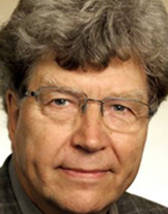The dramatic removal of former leader Hu Jintao from the Chinese Communist Party Congress symbolises the far-reaching political changes that have taken place in China under Xi Jinping.
A press photo from the closing day of the 20th Chinese Communist Party (CCP) Congress has captured the global imagination. It shows the moment former General Secretary Hu Jintao (2002–12) is forcibly removed from the main stage. The highly symbolic picture represents China's 'Führer era', which began in 2012. It is also a public repudiation of China's so-called 'reform and opening up era', which lasted from 1978 until 2012.
What had happened before Hu was walked off the stage, and why does this incident matter? A video recording by Singapore's CNA shows that he attempted to access a red folder in front of him. Hu was prevented from doing so by Li Zhanshu, the outgoing Chairman of the Standing Committee of the National People's Congress.
The folder included documents with a list of names of the newly chosen Central Committee. Had Hu gone through it, he would have realised that his once-powerful China’s Communist Youth League had been completely side-lined. Xi Jinping appears to have anticipated that Hu would visibly express his frustration. Xi thus ordered for Hu to be removed.
The Hu incident reminds us that with the exception of the fall of the Soviet Union in 1991, Communist regimes tend to follow their own political calendar. The thaws of spring are never followed by summer, but always by a political winter: Brezhnev replaced Khrushchev, Husák came after Dubcek.
Excepting the collapse of Communist rule in the Soviet Union and Eastern Europe, the political cycles of Leninist systems normally follow a hydraulic principle of maintaining power. When it serves the stability of the regime, the pressure is lowered by a controlled opening.
China saw some reforms in the 1980s; a political winter throughout the early 1990s following the crackdown on the nationwide pro-democracy movement in 1989; and a brief political spring in the early days of the Hu Jintao administration (2003–07).
However, as soon as the party's power appears to be at risk, the reins are tightened again. From 2008 onwards, the CCP started to see China's maturing pro-democracy movement, diverse colour revolutions in other countries, and the Arab Spring as potential threats to its autocracy.
After 2012, Xi radicalised the party's defence and prevention strategy. The semi-autonomy of many social systems, including in science, culture, the economy, civil society and law, was rolled back. The answer was a re-centralised, re-personalised, hierarchical system of control, patronage and preventive repression.
Xi Jinping uses quasi-Stalinist methods to defend the party's power, including purges of opponents within the party with the help of anti-corruption campaigns
The priority of maintaining power is legitimised by the political-teleological self-image of the party-state as the proverbial incarnation and quasi-sacral 'saviour' of the Chinese nation. A technological surveillance state, the early detection and resolution of problems, and the timely recognition and merciless preventive elimination of any political opposition are all intended to ensure the party's survival.
During both the so-called 'reform and opening up era' from 1978 until 2012 and China's 'Führer era' since 2012, the CCP's monopoly on power and ideology has remained untouchable. In their recent study, Revolution & Dictatorship, Steven Levitsky and Lucan Way have explained the durability of dictatorships born of revolution. Enforced party unity, control of the military and the elimination of dissenting power centres all played a key role in China. The CCP's willingness to exercise ruthless violence in 1989 explains how it has been able to protect its monopoly on power for so long.
Yet, the current Xi regime marks a regression to neo-Stalinism. Xi Jinping uses quasi-Stalinist methods to defend the party's power, including purges of opponents within the party with the help of anti-corruption campaigns. History tells us that in critical phases, Leninist party-states tend to personalise power. This development is then accompanied by a personality cult, a central aspect of institutional decay.
The decivilisation of elite politics under Xi, the suppression of intra-party democracy and the abolition of all rules of succession have led to a personalised dictatorship. While strongman rule is supposed to project strength, it cannot paper over political and institutional weaknesses and risks: a shrinking power base in elite politics; toxic nationalism; an ideologically driven overestimation of Chinese citizens' willingness to make sacrifices on behalf of the nation; an economic crisis because of a failed COVID policy; and the political subjugation of Chinese tech firms.
The social and political scientist Karl Deutsch once distinguished between two types of political learning: creative learning, through which systems can grow, expand and restructure, and pathological learning, through which constructive developments are blocked and self-destructive tendencies may even be released.
Whatever we think about China's so-called 'reform and opening up era', compared with the present 'Führer era', China was infinitely more open, both domestically and in its relationship with the outside world. Admittedly, even during that time, China was never fully open. China's Great Firewall is an example of how the country has never fully coupled itself with the outside world. Yet people-to-people exchanges on the political, economic and societal level were frequent.
It is fair to say that between 1978 and 2012, we saw an uneasy coexistence of openness and isolation in terms of the CCP's power strategy. Yet since Xi Jinping came to power, the blockade of the nerve tracts of the government system has intensified once again.
Document No. 9 (2013) codified Xi's rejection of the foundations of any open society: constitutional democracy, universal values, civil society, neoliberalism, independent journalism, critical historical research and regime criticism were made taboo.
The lack of any significant reappraisal of Stalinism, Maoism and the Cultural Revolution has contributed to the hard authoritarian turn under Xi Jinping
Xi is convinced of his historic mission and fixated on succeeding Mao Zedong as a charismatic leader. As with Russia’s Vladimir Putin, this has a thoroughly egomaniacal component. Kevin Carrico speaks of a ‘Putinism with Chinese Characteristics’.
Strategic and highly risky undertakings are supposed to prove the supernatural abilities of Xi Jinping as China's Führer. The threat of a military annexation of Taiwan, as well as China’s zero-COVID strategy and the brutal repression of the Uighurs, come to mind.
His real or alleged successes are often grotesquely exaggerated by the cult of personality and unified party propaganda. Here, the party's historiography has played into Xi Jinping's hands. There was never a critical public reappraisal of Stalinism in China under either Mao or Deng Xiaoping. The lack of any significant reappraisal of Stalinism, Maoism and the Cultural Revolution has contributed to the hard authoritarian turn under Xi Jinping.
The fact that a neo-Stalinist is leading China should worry us all. Wolfgang Ischinger and Sebastian Turner said it best in their recent op-ed: ‘Democracies require independence from Fuehrer states and credible deterrence’. While light on policy recommendations, they make it clear that China's hard authoritarian turn will need to be met by a more assertive European China strategy.
Independence from the Xi regime will require liberal democracies to disentangle themselves from their reliance on China's market and supply chains. Here we need to bear in mind that China's opening to the outside world was always selective. Its blueprint for industrial development, dubbed ‘Made in China 2025’, has shown that the CCP seeks economic and technological autarky and economic-technological dominance through party-led power trading.
Deterrence will require a change in Western strategic culture. When CCP officials talk of multipolarity and multilateralism, they do not have the liberal-democratic model based on global norms and rules embedded in the UN Charter in mind. The prevalent Chinese concept of multilateralism strongly resembles the Nomos concept of Carl Schmitt: a multipolar world dominated by a few regional hegemonic great power centres, regulated not by universal rules but contingent on balances of power. Ultimately, the goal is to use Leninist China's considerable economic clout to dominate and ultimately subjugate liberal democracies and their economies.
Rather than continuing a policy of appeasement, Western liberal democracies would be well advised to adopt a policy of China constrainment according to the rules of the global liberal order that were agreed to prevent the horrors of the Second World War, Nazism, fascism and the Holocaust from reoccurring. Constrainment is more than containment with an 's' and an 'r' thrown in for good measure. In the words of security expert Gerald Segal, it means to ‘tell China that the outside world has interests that will be defended by means of incentives for good behaviour, deterrence of bad behaviour, and punishment when deterrence fails’.
This Commentary draws on the German-language article ‘Die große China-Illusion. Warum wir einen anderen Blick auf die Volksrepublik brauchen’, published in ‘Blätter für deutsche und internationale Politik’ in August 2022, which can be accessed here (paywall).
The views expressed in this Commentary are the authors’, and do not represent those of RUSI or any other institution.
Have an idea for a Commentary you’d like to write for us? Send a short pitch to commentaries@rusi.org and we’ll get back to you if it fits into our research interests. Full guidelines for contributors can be found here.
WRITTEN BY
Horst Fabian
Andreas Fulda
- Jim McLeanMedia Relations Manager+44 (0)7917 373 069JimMc@rusi.org



